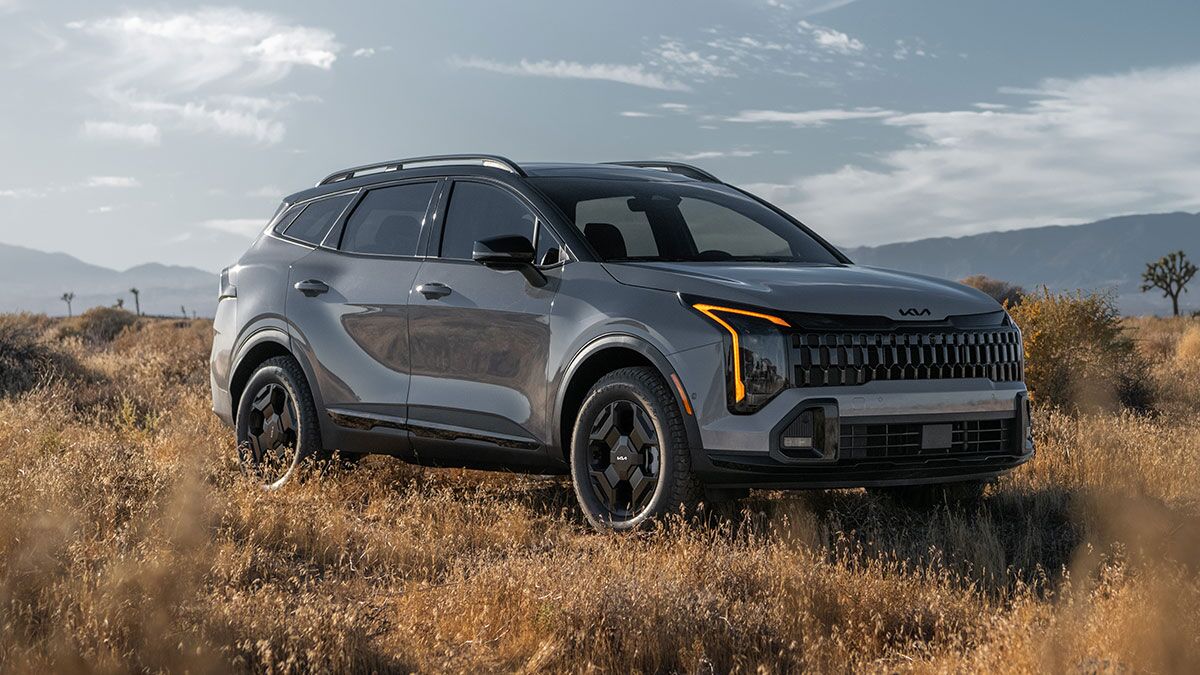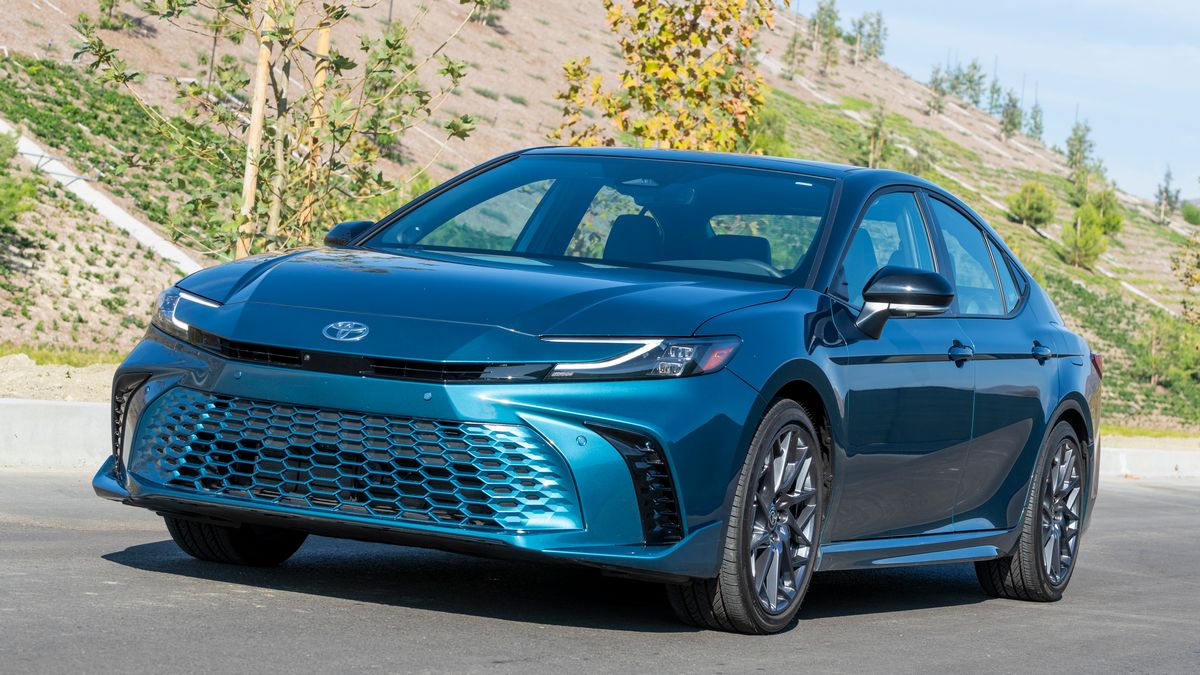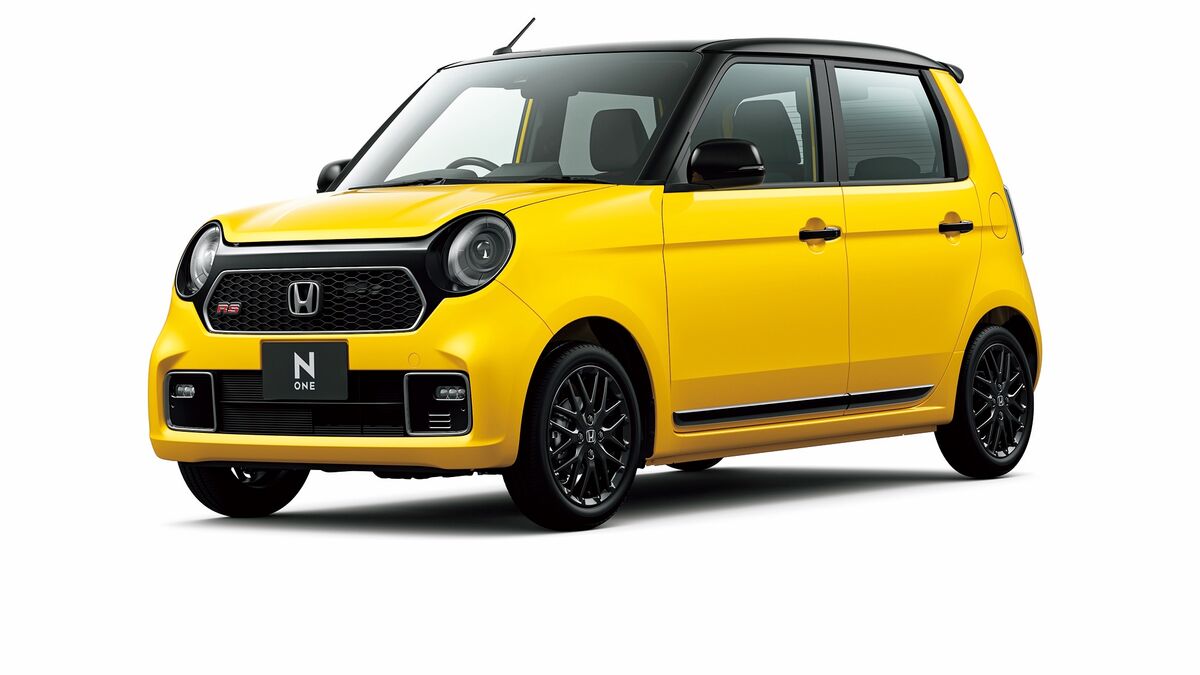Just like your accountant and the U.S. Postal Service, Jaguar Cars wants more. More recognition. More revenue. Just more. Jaguar wants it so bad, they generated a P.T. Barnum August snowstorm at their 2013 automotive press preview in New York City just to make us pay attention. There we were in a tent with an all-wheel drive (!) Jaguar, snowflakes falling all around. But to Jaguar’s credit, the new machinery they showed for 2013 was worth the hand-standing elephants and cotton candy.
For only the first time since its all but forgotten X-Type sedan of a decade ago, in 2013, Jaguar will offer all-wheel drive in both the XF and XJ sedans. Additionally, a supercharged 340-horsepower V6 engine will be offered in both the XF and XJ, while more startlingly, a turbocharged 240-horse 4-cylinder will be optional in the XF. Finally, a new lightning-quick eight-speed ZF automatic transmission will be furnished on all XF and XJ models, and automatic engine start/stop will be furnished on selected XF and XJ models.
Why is this startling news? Isn’t everyone in the mid-lux category downsizing engines and offering all-wheel drive?
Well, yes, they are.
But this was startling not so much from an engineering point of view as from a budgetary point of view. Mercedes-Benz, you see, may think little of making major changes to its drivetrains, because while selling around 250,000 cars per year in the U.S., the cash for making such changes is clearly in the bank. Jaguar Cars, however, despite its considerable prestige here and elsewhere, is, in fact, a very small car company selling about 13,000 cars per year in the U.S. (All the more reason, one could say, for wanting more.) Yet it costs little Jaguar just as much to make wholesale drivetrain changes as it does the huge luxury marques surrounding it. When these 2013 changes were announced, Jaguar may not quite have been going "all-in," but you may be certain the accountants in Brown’s Lane felt the pinch. At the very least, this is a profoundly aggressive step into the future.
A cat is still a cat
Describing the new "Instinctive All-Wheel Drive," as it is referred to by Jaguar, they go out of their way to make clear this system still has a strong rear-wheel drive bias. That is, of course, the traditional configuration Jaguar has always provided, offering the best control and responsiveness in performance driving. Jaguar loyalists would stand for nothing less.
Yet the persistent presence of micro-electronics is a major part of the new "Instinctive" system, reading all four wheel sensors every millimeter of the way. In normal, dry-pavement traction, the front-to-rear drive ratio is about 10:90. However on evenly slippery surfaces like snow, this ratio will adjust to about 50:50. And in radically different traction conditions where, say, the front wheels have good grip and the rear grip is poor, the ratio can automatically adjust to 100:0. In short, the system is continuously variable, fully on-demand and will generate whatever traction is available to it.
One of the most interesting things about this AWD system is that its introduction was dictated entirely by the American market. All-wheel drive has become a critical component in the upper two-thirds of the U.S., where winter is more than just a six-letter word. Prior to these 2013 model changes, Jaguar had only rear-wheel drive V8s to offer, yet the existing mid- and full-size luxury market in the winter states had gone 82-percent AWD. Even in the Sun Belt, a significant 18 percent of these segments were all-wheel drive. And across the entire country, fully 61 percent of the mid- and full-size luxury segment was now powered by V6 engines. Jaguar was all but disenfranchised, commanding a paltry seven percent of its market in the north, and the AWD and downsized-engine trends were likely to grow stronger and stronger.
All-wheel drive and more-efficient engine options were imperative
Yet knowing the budgetary strain that such re-engineering would cause, Jaguar insiders wrangled hard over whether to add all-wheel drive to the costly new V6 and four-cylinder engine projects. Three years ago, however, when upper management heard the desperate demands of American dealers for AWD, the decision became unavoidable. If they were to compete in America, where Jaguar depended on selling 75 percent of its products, a very considerable number of their cars must have four drive wheels. End of debate.
And beginning of scramble. What would’ve taken at least two and a half years was crushed into two years of furious engineering. The XF and XJ had never been intended for all-wheel drive, and front suspensions, transfer cases, front subframes, engine mounts, steering racks, differentials and exhausts all had to be redesigned. Like going to the moon, it was impossible. Like going to the moon, they did it.
The 2013 XF, after having been updated in 2012, now has two new engine options. The entry-level turbocharged 2.0-liter inline 4-cylinder produces 240 horsepower, has a 29-mpg EPA highway number and is available for $47,850—the lowest-priced Jaguar in some time.
The next step up the ladder is the supercharged 3.0-liter V-6, almost miraculously delivering a 28-mpg EPA highway mark and 100 more horsepower — 340 ponies in all — for $50,875. With all-wheel drive, add $3,000. A 470-horse and 510-horse version of the V8 cost $68,975 and $84,075, but the V8s cannot be fitted with all-wheel drive. A very promising 8-speed ZF automatic transmission is supplied on all 2013 models. It weighs the same as the 6-speed it replaces and very quick 200 millisecond shifts. Auto Stop/Start is supplied in all supercharged V6 and V8 models to save fuel.
2013 Jaguar XJ
The XJ is Jaguar’s premium sedan — with prices to match. The supercharged 3.0-liter V6 is newly available here and costs $74,075, $500 less than a 2012 with the 5.0L V8. Add all-wheel drive and that figures rises to $77,575. The Portfolio model is a long-wheelbase XJ with a naturally aspirated 5.0-liter V8 ($82,075). AWD and the 3.0-liter V6 will list at $84,575. Two 5.0-liter supercharged V8s are $90,475 or $93,475 for the long wheelbase. And finally, the 510-horsepower XJ Supersport ($113,475), the XJL Supersport ($119,975) and super-luxurious XJL Ultimate ($156,750) complete the line.
2013 Jaguar XK
Jaguar is nothing if not a builder of sports cars, and the XK Coupe and Convertible continue after their major 2012 revisions. Light aluminum construction and a 5.0-liter V8 that ranges from 385 to 550 horsepower are the focus here. New for 2013 is an entry-level Touring model in both Coupe and Convertible versions, the Coupe starting at $79,875 and the Convertible at $85,875. Both are powered by Jag’s 385-horse 5.0-liter V8. Slightly bettyer appointed, the conventional Coupe and Convertible use the same engine as the Touring model open at $85,375and $91,375, respectively.
A supercharged 510-horsepower version of the 5.0-liter V8 powers the 2013 Jaguar XKR Coupe ($98,375) and the XKR Convertible ($104,375). The top of the XK range is the limited-production XKR-S line. Only 100 XKR-S Coupes and 100 XKR-S Convertibles will be sold in the U.S. in 2013. Powered by a forceful 550-horse supercharged 5.0-liter V8, the Coupe sells for $132,875, and the Convertible lists at $138,875.
– Ted West







